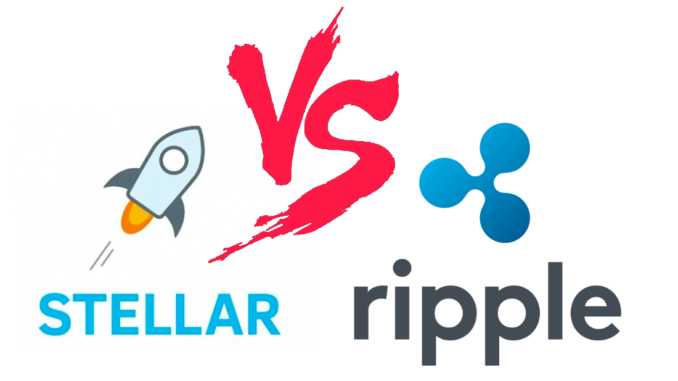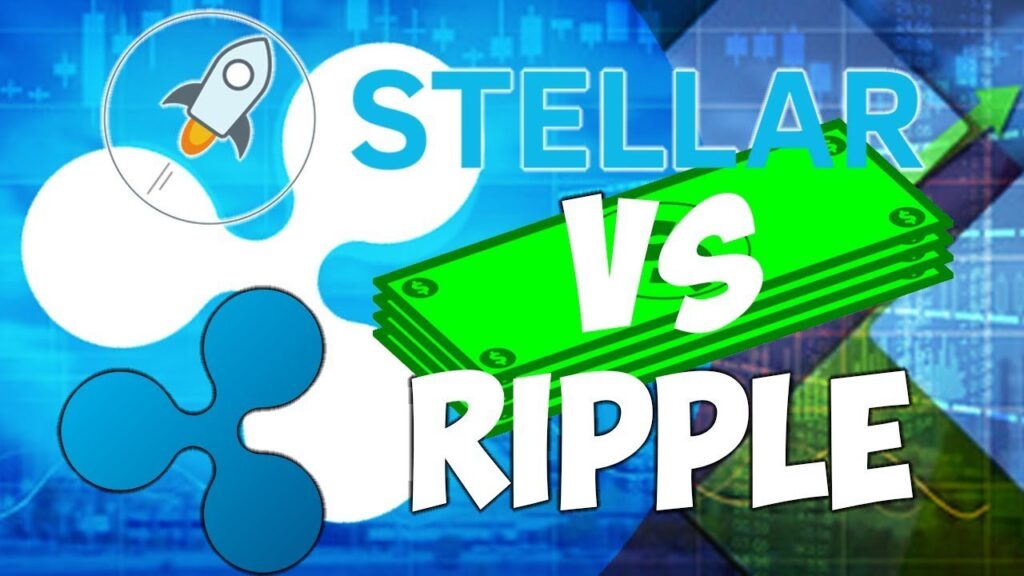
If you know a thing or two about cryptocurrencies, you definitely heard about Stellar (Lumens) and Ripple. Their digital coins (XLM for Stellar and XRP for Ripple) are among the most popular cryptocurrencies right now.
Crypto fans often compare the two companies since they both are designed to provide cross-border financial transactions. Although Lumens and Ripple have a lot of similarities, they are different. With that in mind, we have decided to compare Stellar and Ripple to help you make a smart decision.
In our article, you will find comprehensive information about their similarities, differences, and which cryptocurrency might be better for you.
Stellar vs. Ripple: what is the mission?
While Stellar and Ripple have a similar mission, there is one significant difference if we take a closer look at their audiences. Each project is targeting its own type of users. Lumens focuses on individuals throughout the world, while Ripple tries to build partnerships with financial institutions to help them transfer funds globally. Which plan is better? It depends on your preferences.
According to reports, more than 1.7 billion people don’t have a bank account. If we take into account that around 7.8 billion people live in the world right now, it means that one in five people doesn’t have access to banking services such as loans, credits, and payments.
While financial institutions might be trying to bring in these people into the traditional banking system, Lumens was designed to make something really different. This platform is aimed to skip bureaucracy and give unbanked individuals the financial services they desperately need. This became possible thanks to advanced blockchain technology. For example, people who don’t have an access to regular banking services could use Stellar as an alternative to well-known financial institutions.
Other advantages of the Stellar platform include the ability to transfer funds fast and cheaply all over the world. Borders are nothing when you are using Lumens. This is particularly useful for unbanked people who might work in other countries and want to send money back home. They usually have no choice but to use expensive money transfer services such as Western Union. The XLM project can make their lives much comfortable.
The coin also allows its members to exchange their assets at ease, which is something that would often be challenging and costly, as anyone who has handled foreign currencies can admit.
When it comes to Ripple, it also offers inexpensive and fast transnational financial operations. However, it targets primarily not people but the financial institutions themselves. It isn’t bad! Quite the opposite, it can make banking services more accessible.
Billions of dollars are crossing the borders every month, so if Ripple can reduce the fees and make the banking transactions much faster, it would be a huge achievement for both banks and Ripple.
Stellar vs. Ripple: which one does offer more features?
When it comes to the features of Ripple and Lumens, it is fair to say that Lumens is a bit better. The Stellar platform is jam-packed with various useful services and extra products.
While Ripple is concentrated mainly on cheap and fast cross-border payments, Lumens does the same and even more. As we have already mentioned above, Stellar also allows customers to convert their funds into other currencies directly on the Stellar platform. Simply put, Stellar offers a built-in and easy-to-use exchange. Meantime, when it comes to Ripple, you have to use other exchange services to exchange your XRP for something else.
Furthermore, the coin offers other services, including smart contracts. In other words, Lumens can be used not only as money but also as programmable money. What does it mean? For instance, by applying XLM smart contracts, you can create your own coin contribution. You can also start your own ICO, where you trade Stellar-based tokens to finance the development of blockchain technology.
Lumens vs. Ripple: are they decentralized?
Another important aspect to take into account when comparing Stellar and Ripple is how they build their networks. There is a big difference between Lumens and XRP.
First of all, Ripple doesn’t allow everyone to take part in the consensus process. Only chosen individuals or institutions, like banks and other big players on the financial market, can validate transactions. Stellar, on the other hand, works more transparent, allowing anyone to join the consensus process.
Moreover, Ripple was harshly criticized when it suspended Jed McCaleb’s XRP savings after he decided to leave the company. While the problem was resolved, the initial decision went against the main principles of crypto. Cryptocurrency is famous for censorship resistance and decentralization. The crypto world is open to everyone, meaning that people can make financial operations without fear of censorship.
That’s why XLM is the winner here, as it is much closer to the fundamental ethos of crypto.

Stellar vs. Ripple: how do they distribute the coins?
Coins are a key element of every cryptocurrency system, so it is a great idea to compare Ripple and Lumens in this regard. Ripple seems to be a little worse competitor here, as the foundation behind Ripple manages more than 60% of all XRP.
Lumens also had issues when it comes to tokens distribution. The Stellar foundation controlled about 85% of all Lumens. However, this was dramatically changed in 2019, when the company decided to burn more than 55 billion XLM.
Stellar vs. Ripple: what about inflation?
The last aspect we are going to compare is inflation. It is very important when it comes to cryptocurrencies.
Ripple’s supply is fixed, while Stellar has 1% inflation a year. In addition to that, Ripple burns all transaction fees. In other words, Ripple is deflationary (supply declines over time) and Stellar is inflationary (supply rises over time). Hence, from a price perspective, Ripple seems to be better on inflation.
Conclusion
To conclude, Stellar and Ripple both are excellent cryptocurrencies. Generally, they are similar assets. At the same time, there are several characteristics that are different. Both Lumens and XRP have advantages and disadvantages. Therefore, it is a great idea to keep in mind all of them while choosing what to invest in.
When it comes to features, decentralization, and coin distribution, Lumens seems to be better. However, Ripple beats Lumens when we are talking about the inflation policy.
Anyway, it’s likely that the two cryptocurrencies will play crucial roles for the future rather than one will beat the other in all categories. Ripple will continue to cooperate with corporations and banks, while Stellar will continue to focus on unbanked people to offer them an alternative to an expensive and centralized banking system.